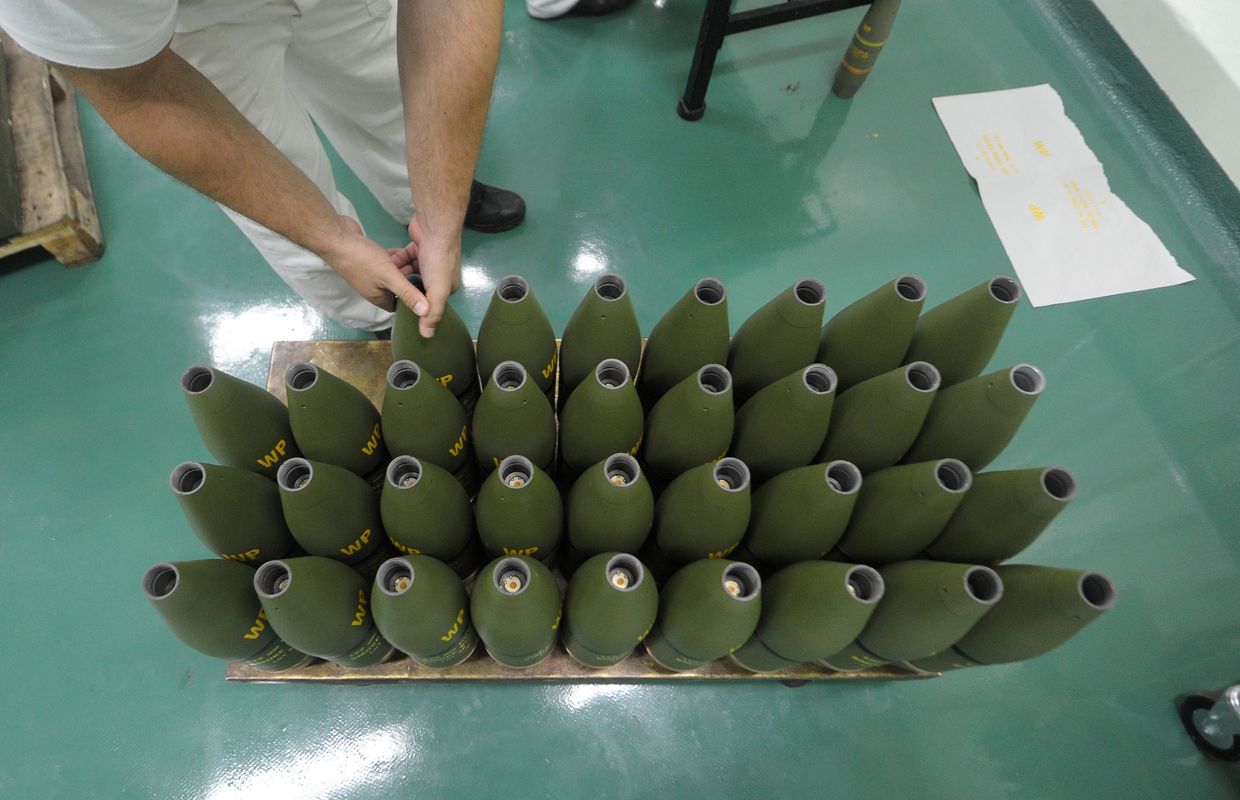A new series of Race Across the World is back on our screens, and this time, the teams are navigating themselves through a line-up of destinations from China to India.
The first episode, which aired on 23 April, introduced us to five intrepid duos who set off on a 14,000km race to try and reach the end point on the southernmost tip of India first.
Among the teams are brothers Brian and Melvin, mother and son Caroline and Tom, sisters Elizabeth and Letitia, and young Welsh couple Fin and Sioned.
Among the teams are brothers Brian and Melvyn, sisters Elizabeth and Letitia, and young Welsh couple Fin and Sioned.
Completing this year's cast are mother and son pair Caroline and Tom, as well as the unlikely duo of previously married couple-turned-friends Yin and Gaz.
This year, the teams are trekking across China, Nepal and India. The pairs will travel their way through towns, cities and rural areas with a limited budget and resources carried in backpacks, making decisions as to what transport they will use, which route to take, where they will sleep and how much to spend.
After launching into the race at the Great Wall of China, the teams are ticking off checkpoints along the way whilst also setting their sights on being the first to reach the final destination.
With this year's race in full swing, here are the locations (we currently know about) across Asia where cameras followed our five new teams for the latest instalment of Race Across the World.
The start
The Great Wall of China
This year’s teams kicked off their journey at the Great Wall of China (Getty Images/iStockphoto)
The race began at the Great Wall of China, overlooking the village of Huanghuacheng, around 80km north of China’s capital, Beijing. A fitting start for such a long trek, the walk across the entire Great Wall would certainly compete for an extensive journey in itself, stretching over 21,000km. One of the new seven wonders of the world, the Great Wall of China, is the largest manmade project that represents over two thousand years of Chinese history. The series of fortifications starts in the east at Shanhaiguan in Hebei province and ends at Jiayuguan in Gansu province to the west.
Checkpoint one
Huangling, China
Huangling in China is known for drying out chillis and other crops on rooftops (Getty Images)
Around 2,000km to the south of the Great Wall is the first checkpoint, Huangling in the Jiangxi province, which has nestled on the slopes of Huayi Mountains for over 500 years. This community is famous for its Hui-style architecture and drying chillies on rooftops, creating a colourful bird’s-eye view. This picturesque village, dotted with historical buildings and ancient sites, is surrounded by a scenic spread of lush greenery across the mountain slopes. The town is six centuries old, but lay in a dilapidated state until 16 years ago, when it transformed into a rural tourist hotspot. The teams were told to reach Huangling via cable car, then alight to cross the Leixin Suspension Bridge before finally checking into the Huangling Shaiqiu Hotel.
Checkpoint two
Sanya, China
The 108m-tall Guanyin of Nanshan is situated just off the coast of Sanya (Getty Images)
In the second episode, the five teams prepare to leave Huangling for a 2,700km journey to the city of Sanya, on the southern tip of Hainan Island. Along the way, the teams stopped at different places from glitzy cities to deep rural gems, including the cosmopolitan city of Xiamen on the coast, the Longji Rice Terraces near Guilin, and the ancient town of Fenghuang. After traversing much of southeastern China, the leg ends with Sanya, one of China’s most southerly cities. Sanya attracts much of the wealthy elite in China due to its tropical climate, but as a result of this weather, it is also prone to monsoon storms. The city has several beaches along its coastal areas, including Dadonghai Bay and Yalong Bay, while one of its most impressive cultural landmarks is the Nanshan Temple. The temple is dominated by a statue of Guanyin, the Buddhist goddess of compassion and stands taller than the Statue of Liberty, as its three connected portraits look out while standing on an artificial islet. The Yazhou Ancient City, Yalong Tropical Paradise Forest Park and Wuzhizhou are also among other popular places to visit in Sanya.
Checkpoint three
Shangri-La, China
Shangri-La was named after the fictional paradise in 2001 (Getty Images/iStockphoto)
Departing Sanya, the teams this week travelled through southwest China, stopping in key transport hubs such as Kunming and Nanning, spotting monkeys in Guizhou, and visiting the world’s largest musical fountain in the sustainability-driven city of Liuzhou. The goal is to reach Shangri-La, a city on the edge of the Tibetan plateau in the heart of the Hengduan mountain range. The city was known for centuries as Zhongdian, but in 2001 it was renamed after the fictional utopia described in James Hilton’s Lost Horizon in an effort to entice more tourists. The city has a cultural heritage that blends Chinese and Tibetan, as seen through its architecture, such as Yunnan’s largest Tibetan Buddhist monastery, Songzanlin Monastery, and its mix of vibrant courtyard-style homes and temples. Shangri-La also attracts visitors each year to its annual horse racing festival, usually held in June.
Checkpoint four
Varanasi, India
The sacred city of Varanasi (Getty Images/iStockphoto)
As the Himalayas separating Shangri-La from India present a gargantuan challenge capable of humbling even the world’s most fearless adventurers, the remaining four teams were flown to the Nepalese capital of Kathmandu to restart their race. Set in a valley surrounded by mountains, this bustling city is home to traffic-jammed alleyways, historic cultural sites, seven Unesco World Heritage Sites and the picturesque and peaceful Garden of Dreams. Checkpoint four is Varanasi, one of the world’s oldest continuously inhabited cities and a site of profound spiritual importance. Situated on the banks of the Ganges River in the northern state of Uttar Pradesh, it’s a major pilgrimage site for Hindus, as well as Buddhists and Jains. Home to the Kashi Vishwanath Temple, one of the most sacred Hindu sites in India and the Manikarnika Ghat, one of the holiest cremation grounds among the sacred riverfront ghats, Varanasi is a frenetic and unforgettable city that marks our intrepid travellers’ fourth checkpoint.
Checkpoint five
McLeod Ganj, India
Dalai Lama Temple, Tsuglagkhang Complex, one of the many religious sites in McLeod Ganj (Getty Images)
After reaching Varanasi, India’s spiritual capital, the racers discovered their next checkpoint would be McCleod Ganj, a journey that would take them 1,500km northwest. The highly elevated town, known as a hill station, is home to the 14th Dalai Lama and has a large Tibetan community after he and many others sought refuge here in 1959 after an uprising against the Chinese in Tibet. This story is told in the Tibet Museum in McLeod Ganj, which puts on exhibitions showcasing Tibet’s history, culture and situation in the present in exile. The town also draws thousands of visitors coming in search of blessings and Buddhist wisdom, as well as domestic travellers looking to avoid soaring temperatures. To get there, the Race Across the World teams needed to traverse one of the most populated areas on Earth, before climbing nearly 7,000 feet into the foothills of the Himalayas within the district of Himachal Pradesh. The area was named after Donald Friell McLeod, who was a Lieutenant Governor during British colonial rule in India. The Himalayan town has lots of scenic viewpoints over the foothills, including areas such as Triund and the Naddi View Point, while colourful houses, monasteries and temples are dotted across the hillside.
Checkpoint six
Sasan Gir, India
Gir National Park is home to free-roaming Asiatic lions (Getty Images)
The sixth checkpoint saw teams travelling a colossal 1,900km to the south of India, heading through the country’s largest state, Rajasthan, the Great Indian Desert and colourful cities such as Amritsar, Jodhpur and Pushkar. The teams were aiming for Sasan Gir, gateway to the Gir National Park, a wildlife destination with large stretches of grassland and the last remaining natural habitat of the endangered Asiatic lion. The park is also home to 40 species of mammals and 425 bird species, with crocodiles, jackals, eagles and owls often seen roaming. However, the park mainly attracts visitors from all over the world to spot the lions on their safari and tour packages. This is due to Gir National Park in Gujarat being the only place in the world, aside from Africa, where you can spot lions roaming free in the wild. The small Sasan Gir village, home to the Maldhari and Siddi communities, also has plenty of hotels and resorts to stay in near the national park. The park has 1,412 square metres of dry deciduous forest, and stays very hot all year round, with its lowest temperature 28C in the winter, and highs of 39C in the summer.
Checkpoint seven
Panaji
The baroque Our Lady of the Immaculate Conception church is the centrepiece of Panaji (Getty Images)
For the penultimate checkpoint, the teams trekked 1,500km south of Sasan Gir to Panaji, the capital of India’s smallest state, Goa. After passing through destinations such as Vadodara, vineyards in Igatpuri and the country’s largest city, Mumbai, the pairs reached the coastal city made up of palm-fringed beaches and colourful streets. Until 1961, the city was under Portuguese colonial rule, with echoes of this heritage still woven through its red-tiled roof buildings, baroque architecture and Goan-Portuguese bakeries selling custard tarts. One notable baroque construction is the towering Our Lady of the Immaculate Conception church, with its bright white facade standing out in a sea of bold buildings and vibrant street art. The city now attracts millions of tourists each year, drawing a young crowd to Goa’s relaxed beach scene and creatives to its public art, collectives, art festivals and galleries. Panaji also sits on the banks of the Mandovi River, which flows out into the Arabian Sea and has coastal hotspots such as Bamolim Bay and Miramar, attracting beachgoers. The small Olive Ridley sea turtle has been seen nesting at Panaji’s beaches, and Galgibaga, further down the coast, has a protected area to help the nesting turtles.
The end
Kanniyakumari, India
Famous for its sunrise and sunset, the final destination this series is Kanniyakumari, the southernmost point in mainland India (Getty Images)
To win a prize of £20,000, the teams must reach the endpoint of Kanniyakumari first. Located on the southernmost tip of India and a popular pilgrimage point, Kanniyakumari sits at the converging point of three major bodies of water, the Arabian Sea, the Bay of Bengal and the Indian Ocean. Alongside its sublime coastal views, the town is filled with historic monuments, such as the 95-foot-tall Thiruvalluvar Statue, as well as temples, churches and waterfalls. However, one of its major pulls is being the location for some of the best sunrise and sunset spectacles in the country, as its geography allows for witnessing both, appearing as if the Sun rises and then drops back below the horizon line.
Watch Race Across the World on Wednesdays at 9pm on iPlayer and BBC One
For more travel news and advice, listen to Simon Calder’s podcast
.png)
 German (DE)
German (DE)  English (US)
English (US)  Spanish (ES)
Spanish (ES)  French (FR)
French (FR)  Hindi (IN)
Hindi (IN)  Italian (IT)
Italian (IT)  Russian (RU)
Russian (RU)  12 hours ago
3
12 hours ago
3

















Comments